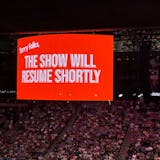The allure of "clean" hydrogen as a climate change remedy is so potent that Congress ponied up $8 billion for it.
Xcel Energy and the state of Minnesota want a chunk of that money. They are teaming up with North Dakota and other partners in the proposed "Heartland H2 Hub," which would turn the two states into a hive of hydrogen production.
The U.S. Department of Energy this year is expected to name up to 10 clean "hydrogen hubs," bestowing up to $1.25 billion on each project.
"What this is about is creating a new hydrogen economy," said Brian Ross, vice president of renewable energy at the Minneapolis-based Great Plains Institute, a nonprofit research group. "The hubs would effectively jump-start the [clean hydrogen] market."
Clean hydrogen could be a tool to abate climate change, along with renewable power. Unlike natural gas, hydrogen does not emit carbon dioxide when burned. It is seen as critical to decarbonize parts of the economy at a time when companies and states such as Minnesota have set zero-carbon goals.
Creating energy with hydrogen, though, is in its infancy with many barriers to overcome before it can be a reliable part of the clean energy equation. There are two main varieties — and both are included in the North Dakota-Minnesota proposal.
"Green" hydrogen is manufactured from renewable energy in an expensive, electricity-intensive process. Xcel would harness wind power to make hydrogen for a novel fertilizer factory in Morris, Minn. — as well as for fuel in its own power plants and heating systems.
CLEAN HYDROGEN FROM RENEWABLES


The process
"Blue" hydrogen, a bedrock of North Dakota's Heartland hub plans, is made from natural gas, the feedstock of current hydrogen production. However, the blue process captures carbon dioxide emissions from gas and stores them underground. It's also an expensive process and one that's often panned by environmental groups.
